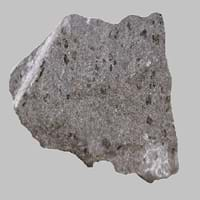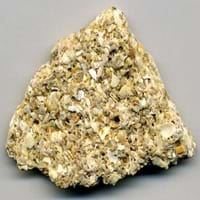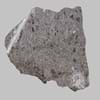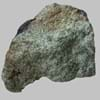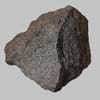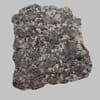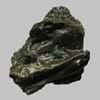Tephrite and Coquina
Definition
Definition
Tephrite is an aphanitic to porphyritic textured, volcanic igneous rock
Coquina is a sedimentary rock that is composed either wholly or almost entirely of the transported, abraded, and mechanically-sorted fragments of the shells of molluscs, trilobites, brachiopods, or other invertebrates
History
Origin
Germany
European Foreland Basins
Discoverer
Van Tooren
Unknown
Etymology
From Greek tephra, ashes from Indo-European base, to burn
From Concha (Latin)+ Coquina(Spanish) +conch(English)= Couquina (mid 19th century)
Class
Igneous Rocks
Sedimentary Rocks
Sub-Class
Durable Rock, Hard Rock
Durable Rock, Soft Rock
Family
Group
Volcanic
Not Applicable
Other Categories
Coarse Grained Rock, Fine Grained Rock, Medium Grained Rock, Opaque Rock
Coarse Grained Rock, Opaque Rock
Texture
Texture
Aphanitic to Porphyritic
Clastic
Color
Black, Brown, Colourless, Green, Grey, White
Beige, Buff, Orange
Maintenance
Less
More
Durability
Durable
Non-Durable
Water Resistant
Yes
No
Scratch Resistant
Yes
No
Stain Resistant
No
No
Wind Resistant
Yes
No
Acid Resistant
No
No
Appearance
Vesicular
Layered, Banded, Veined and Shiny
Uses
Architecture
Interior Uses
Decorative Aggregates, Flooring, Homes, Interior Decoration
Decorative Aggregates, Homes, Hotels, Interior Decoration
Exterior Uses
As Building Stone, As Facing Stone, Garden Decoration, Office Buildings
Garden Decoration, Office Buildings
Other Architectural Uses
Curbing
Curbing
Industry
Construction Industry
Landscaping
Building houses or walls, Construction Aggregate
Medical Industry
Not Yet Used
Not Yet Used
Antiquity Uses
Artifacts, Sculpture
Artifacts, Monuments, Sculpture, Small Figurines
Other Uses
Commercial Uses
Production of Lime, Soil Conditioner
Creating Artwork
Types
Types
Not Available
Not Available
Features
Host Rock for Lead
Available in Lots of Colors and Patterns, Is one of the oldest rock
Archaeological Significance
Monuments
Not Yet Used
Used
Famous Monuments
Not Applicable
Data Not Available
Sculpture
Used
Used
Famous Sculptures
Data Not Available
Data Not Available
Pictographs
Not Used
Used
Petroglyphs
Not Used
Used
Figurines
Used
Used
Fossils
Absent
Present
Formation
Formation
Tephrite is a fine-grained, hard rock which is a type of metasomatite, essentially altered basalt. It forms with or without crystallization, either below the surface as intrusive rocks or on the surface as extrusive rocks.
Coquina is a sedimentary rock which is formed when billions of small clam-like seashell, called Coquina, or cockleshell are die and hence are deposited, buried and turns into a rock when pressure is applied.
Composition
Mineral Content
Alkali feldspar, Nepheline, Plagioclase, Pyroxene
Apatite, Augite, Bronzite, Calcite, Chert, Chlorite, Clay Minerals, Epidote, Feldspar, Garnet, Micas, Muscovite or Illite
Compound Content
CaO, Carbon Dioxide, MgO, Silicon Dioxide
CaO, Carbon Dioxide, Iron(III) Oxide, MgO
Transformation
Metamorphism
Yes
No
Types of Metamorphism
Cataclastic Metamorphism, Contact Metamorphism, Impact Metamorphism, Regional Metamorphism
Not Applicable
Weathering
Yes
Yes
Types of Weathering
Biological Weathering, Chemical Weathering, Mechanical Weathering
Biological Weathering, Chemical Weathering, Mechanical Weathering
Erosion
Yes
Yes
Types of Erosion
Chemical Erosion, Coastal Erosion, Glacier Erosion, Sea Erosion, Water Erosion
Coastal Erosion, Sea Erosion, Water Erosion, Wind Erosion
Properties
Physical Properties
Hardness
6.5
1-2
Grain Size
Medium to Fine Coarse Grained
Coarse Grained
Fracture
Uneven
Irregular
Streak
Bluish Black
White
Porosity
Very Less Porous
Highly Porous
Luster
Subvitreous to Dull
Dull to Vitreous to Submetallic
Compressive Strength
90.00 N/mm2
22
Not Available
Cleavage
Crenulation and Pervasive
Not Available
Toughness
2.4
Not Available
Specific Gravity
2.86
1.10-2.24
Transparency
Opaque
Opaque
Density
2.8-2.9 g/cm3
2.8-2.9 g/cm3
Thermal Properties
Specific Heat Capacity
0.92 kJ/Kg K
10
Not Available
Resistance
Heat Resistant, Impact Resistant
Heat Resistant, Impact Resistant, Pressure Resistant, Wear Resistant
Reserves
Deposits in Eastern Continents
Asia
Not Yet Found
Not Yet Found
Africa
Namibia, Uganda
Not Yet Found
Europe
Germany, Hungary, Italy, Portugal, Spain
United Kingdom
Others
Not Yet Found
Not Yet Found
Deposits in Western Continents
North America
USA
USA
South America
Not Yet Found
Not Yet Found
Deposits in Oceania Continent
Australia
New Zealand, Western Australia
Not Yet Found
All about Tephrite and Coquina Properties
Know all about Tephrite and Coquina properties here. All properties of rocks are important as they define the type of rock and its application. Tephrite belongs to Igneous Rocks while Coquina belongs to Sedimentary Rocks.Texture of Tephrite is Aphanitic to Porphyritic whereas that of Coquina is Clastic. Tephrite appears Vesicular and Coquina appears Layered, Banded, Veined and Shiny. The luster of Tephrite is subvitreous to dull while that of Coquina is dull to vitreous to submetallic. Tephrite is available in black, brown, colourless, green, grey, white colors whereas Coquina is available in beige, buff, orange colors. The commercial uses of Tephrite are production of lime, soil conditioner and that of Coquina are creating artwork.
|
||
|
||
|
